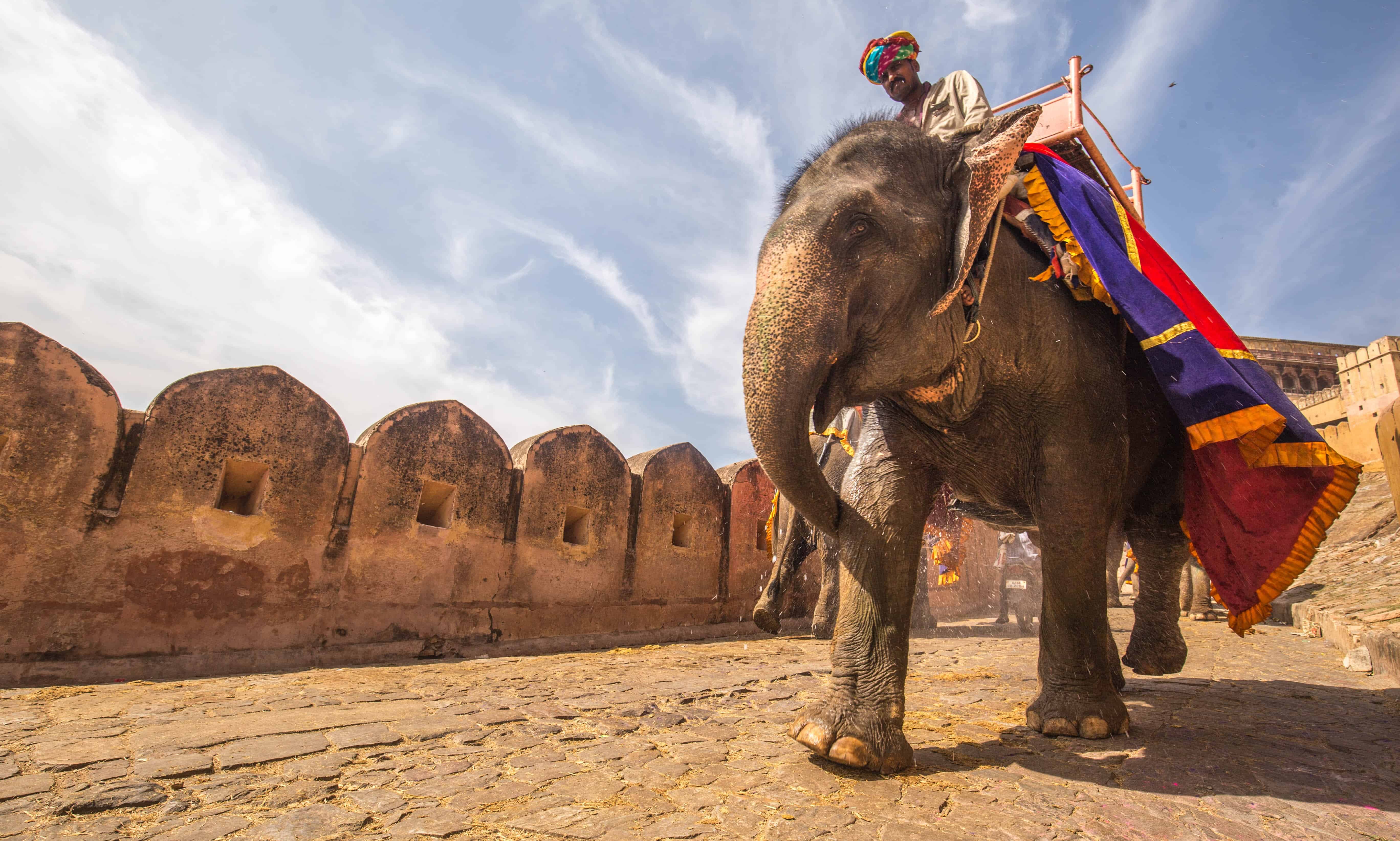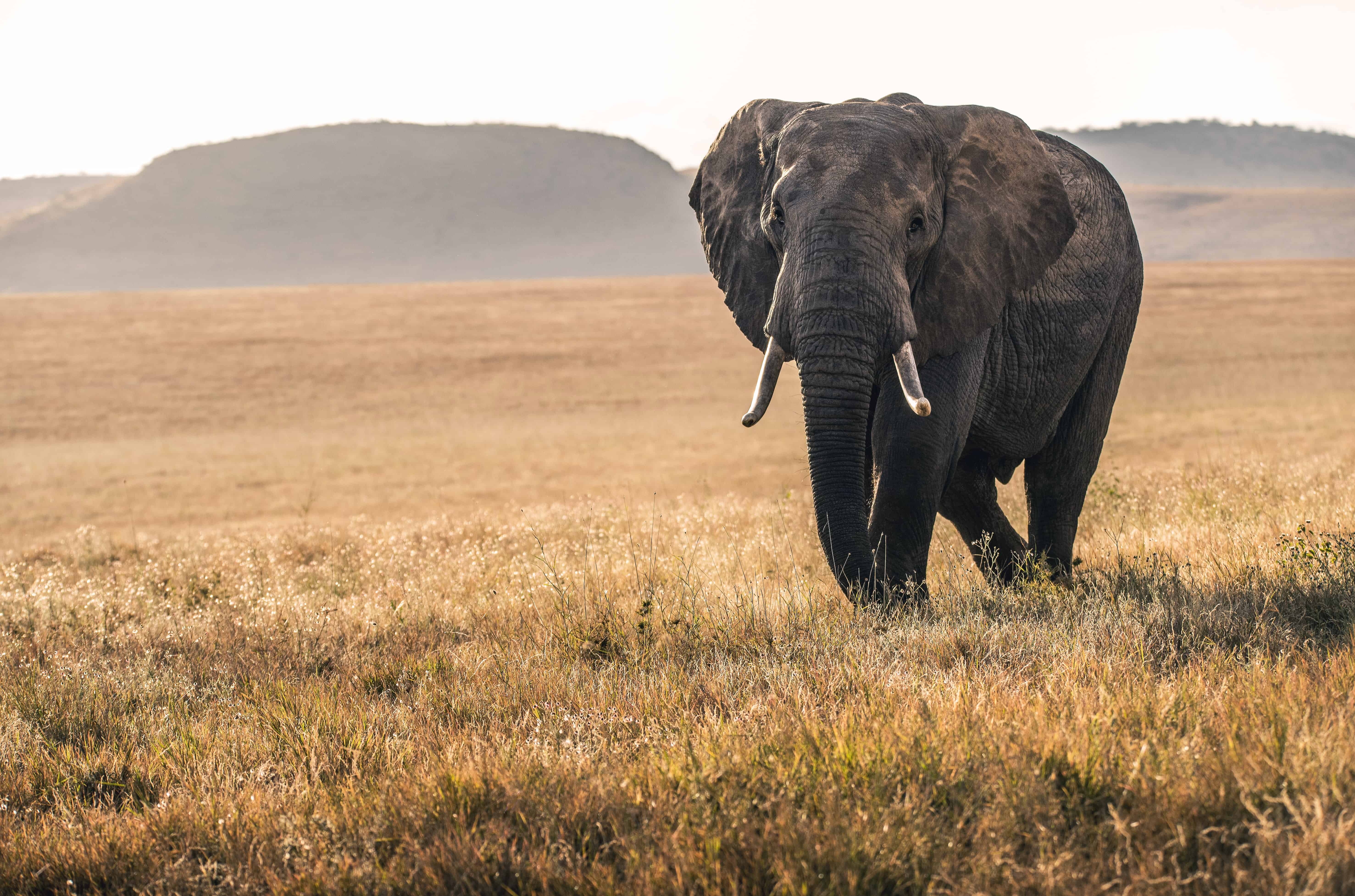Elephants have been used throughout human history for everything from fighting wars to moving heavy objects. Today, elephants are used throughout Thailand for elephant rides.
These rides are catered towards tourists and are a common form of entertainment.
Riding elephants is cruel. Elephants have weak spines that are not designed to carry any significant weight. It can also cause pain and permanent damage to its skeletal structure. What’s even worse is that elephants endure terrible abuse when trained to carry people on their backs.
While simply riding an elephant can cause the animal pain, the training process is what makes it truly cruel to ride an elephant.
In this article, we will discuss what elephants go through during training and why you shouldn’t ride an elephant just because you can.
Why is it Cruel to Ride an Elephant?
Elephants are massive animals with strong shoulders, huge legs, and trunks that can lift over 700 pounds.
Looking at one of these gigantic animals, you would think that a human being would be like a flea on its back – but this is not the case. Carrying the weight of a single person for any length of time can cause an elephant severe pain.
While elephants have sturdy necks and shoulders, they have fragile spines. Riding an elephant just once can cause pain.
Riding an elephant daily, for years at a time, can cause severe and permanent spinal damage.
Most elephants used for rides regularly have a type of chair called a Howdah strapped to their backs for their riders to sit in.
Unlike saddles for horses, these chairs are not comfortable for elephants and are often not removed for long periods.
Carrying these chairs can cause blisters and rashes on an elephant’s sensitive skin, and over time even dislodge backbones.
Injured elephants are either forced to work through the pain or killed since returning them to the wild is not physically possible.
Wild elephants are often skittish and nervous around humans, which makes them unpredictable and dangerous. A wild elephant would never allow a human to ride on its back, and any person who tried would most likely be seriously hurt or killed.
Because of this, elephants have to be trained from a young age to allow humans to ride them.
Why is Training Elephants Cruel?
Training elephants is done by a horrific process called phajaan, which translates to “break/crush the spirit.” For this process, baby elephants in the wild are taken from their mothers and placed in tiny cages to prevent them from moving.
Their feet are sometimes bound with ropes and chains, and they are literally beaten into submission.
Phajaan can last for days or even weeks, during which the baby elephants are starved and deprived of sleep and water. They are beaten with sticks and stabbed with sharp objects repeatedly over this time until they are completely submissive.
Many baby elephants die during this process. After completing phajaan, a baby elephant can start to be trained. A rider or keeper does this, called a mahout.
Mahouts are usually assigned a baby elephant when they are young boys and stay with the same elephant throughout their life.
By the time it reaches adulthood, the elephant will follow the orders of its mahout without question.
Some elephants used for rides also have bullhooks pierced through their ears near the top of their heads. Their mahout will use these hooks to control the elephant by pulling either the left or right hook.
This makeshift “steering” system leaves permanent damage to the elephant's ears, and the irritation causes them pain and possible infection.
Does Riding Elephants Shorten Their Life Expectancy?
Riding elephants reduces their quality of life and dramatically reduces the length of their lives. While elephants' exact life expectancy in the tourist trade is relatively unknown, we know that elephants in captivity live shorter lives, on average, than elephants in the wild.
Elephant Life Expectancy | ||
|---|---|---|
Where it lives | Life Expectancy | The common cause of death |
In the Wild | 41 to 56 Years | Poachers, Deforestation, Hunted for Ivory |
In captivity | 17 Years | Lack of Exercise, Poor Diet, Infertility |
In Tourist trades | Unknown | Psychological Distress, Malnutrition, Abuse |
Captive elephants in zoos, even when well cared for, generally live about half as long as elephants in the wild, and captive elephants in the tourist trade are not well cared for.
More than 50% of all elephants captured for use in elephant tourism die during the phajaan process. The elephants that survive live short and brutal lives.
Using Elephants for Riding Hurts Their Numbers in the Wild
Both Asian and African elephants are on the endangered species list, with Asian elephants being slightly more endangered. There are about 415,000 wild African elephants and around 50,000 wild Asian elephants left in the world today.
A large reason for this is deforestation in Asia. With humans closing in and Asian elephants losing so much of their habitat, their population is dropping very quickly.
Elephants need as much as 100 acres of land per animal, so herds occupy large land expanses that are currently being decimated.
On the other hand, African elephants are an endangered species mainly because they are illegally hunted for their ivory tusks. Ivory from the elephant’s tusks can be used to make:
According to National Geographic, around 35,000 African elephants are poached every year in Africa for their skin, meat, ivory, and bone.
This means that there are only about 485,000 African and Asian elephants left in the entire world – both in captivity and in the wild.
While this may seem like a large number, when you compare it to the nearly 8 billion humans that live on this planet, 485,000 is a tiny population for an entire species.
Conclusion
Elephants are widely considered to be some of the most intelligent creatures on the planet.
Research has shown that elephants feel emotions similar to humans and mourn their dead for extended time periods.
Unfortunately, some people look at these amazing animals and see nothing but dollar signs.
Keeping elephants in captivity and riding them for entertainment is not only cruel, but it's also affecting elephant health and population.
Elephants have been around since long before humans ever walked this planet, and it is our responsibility to make sure that they are around after us.


